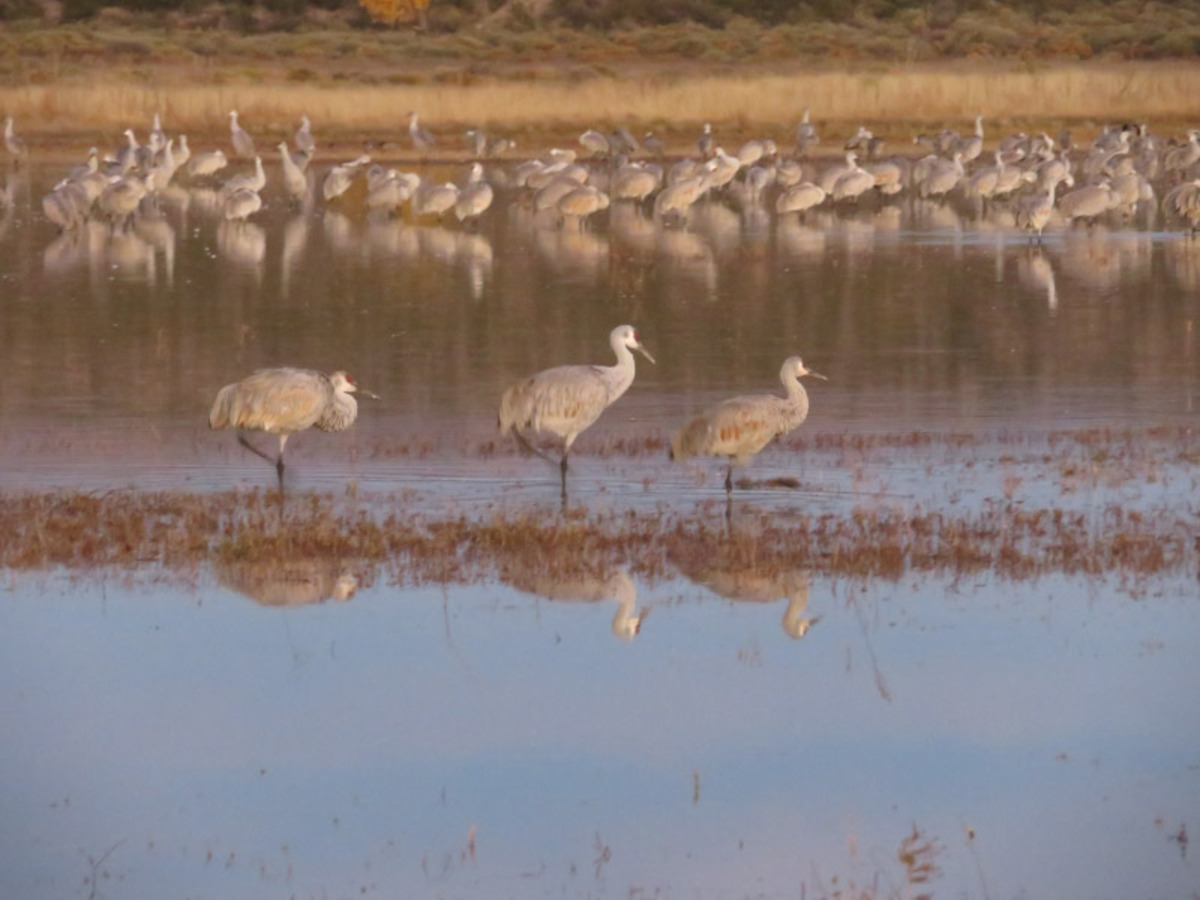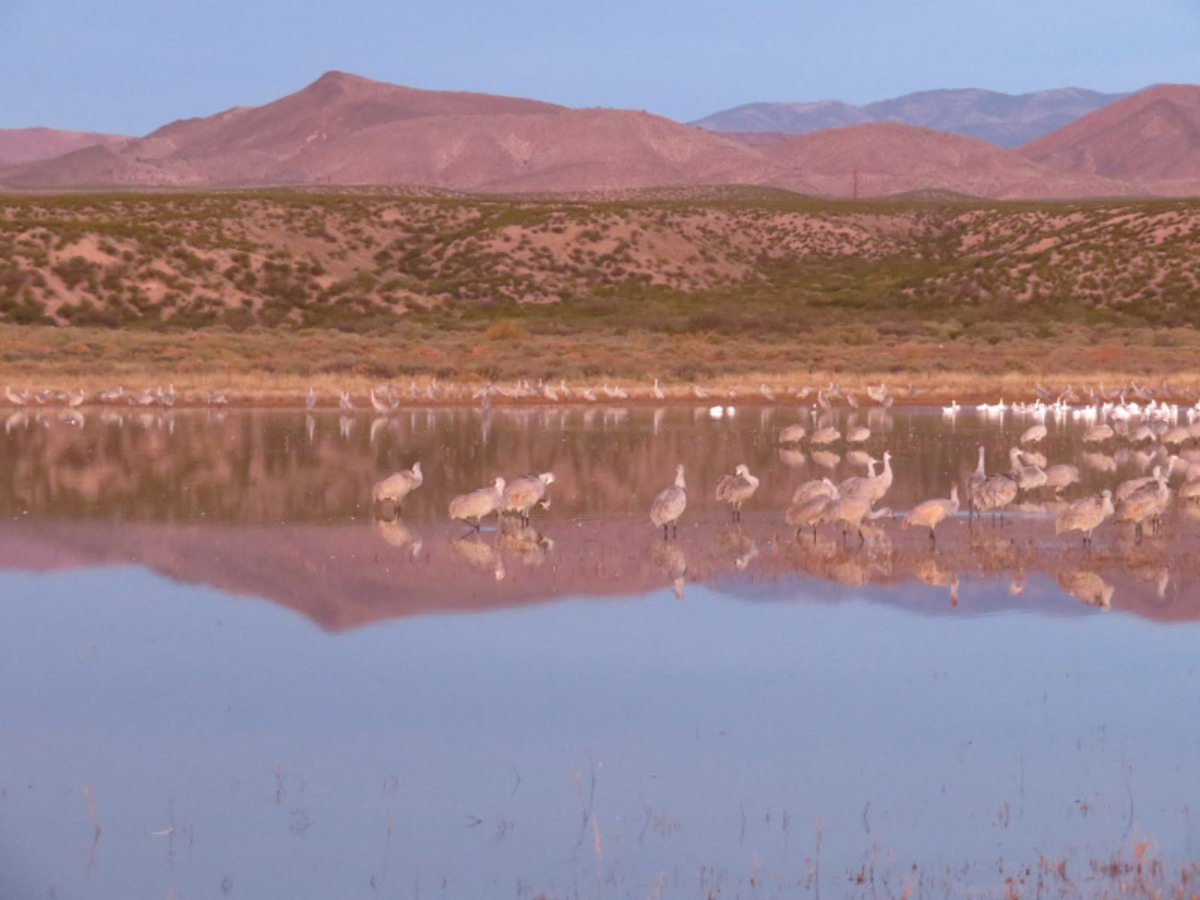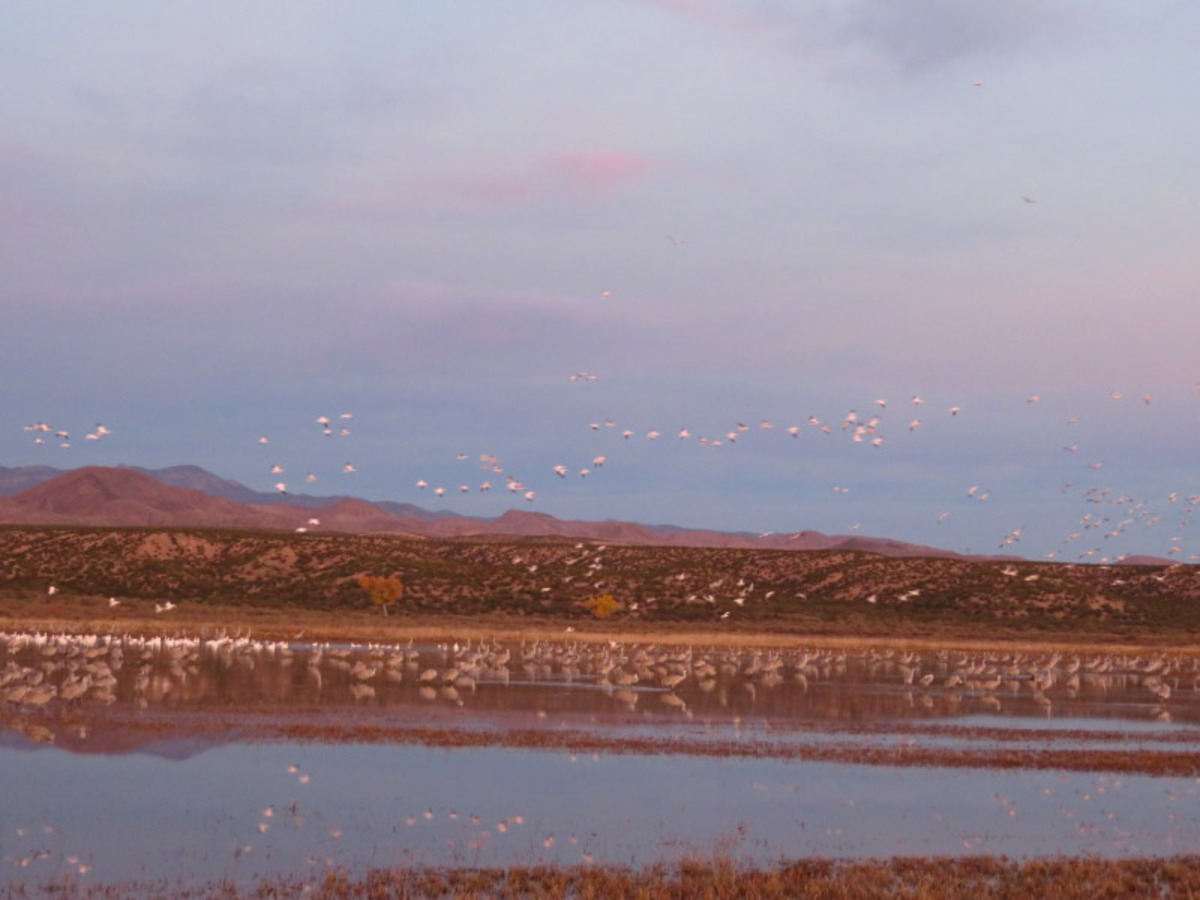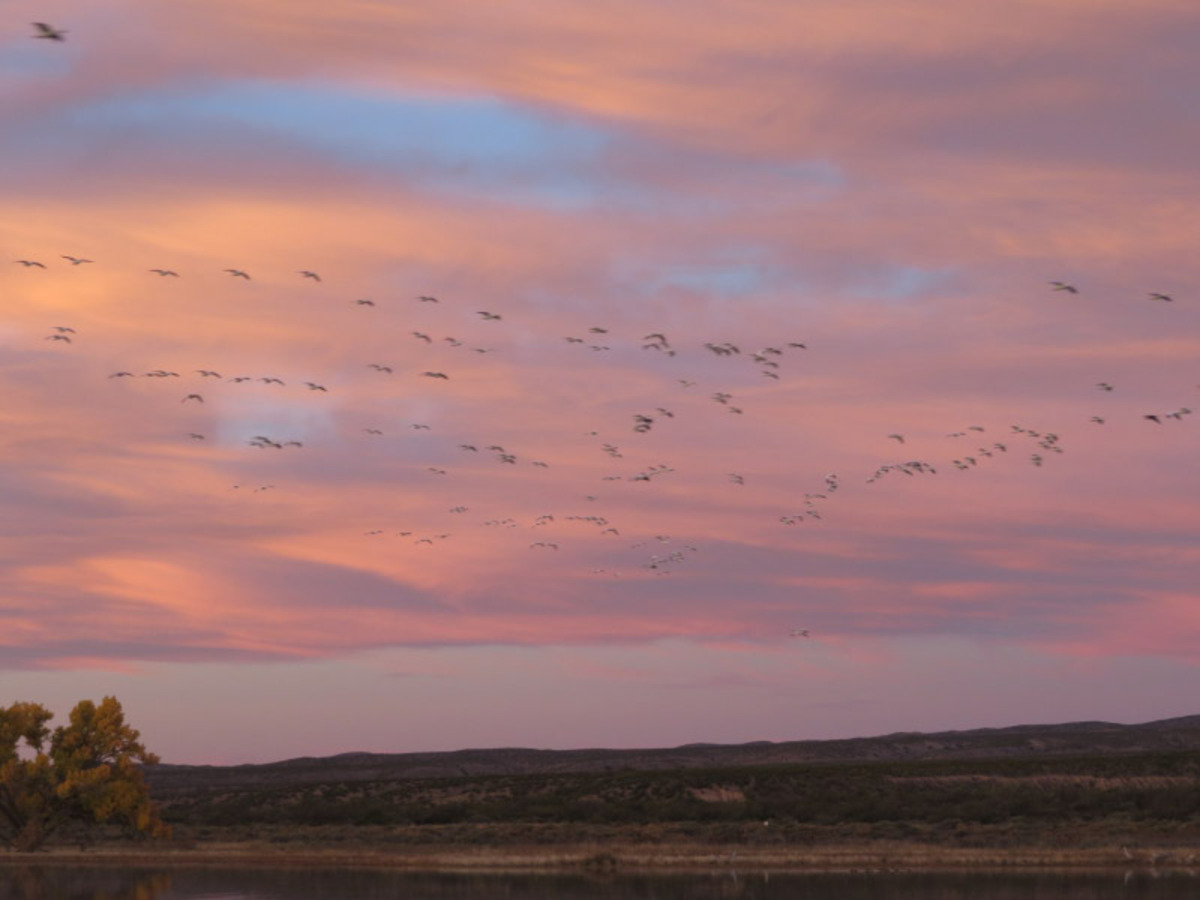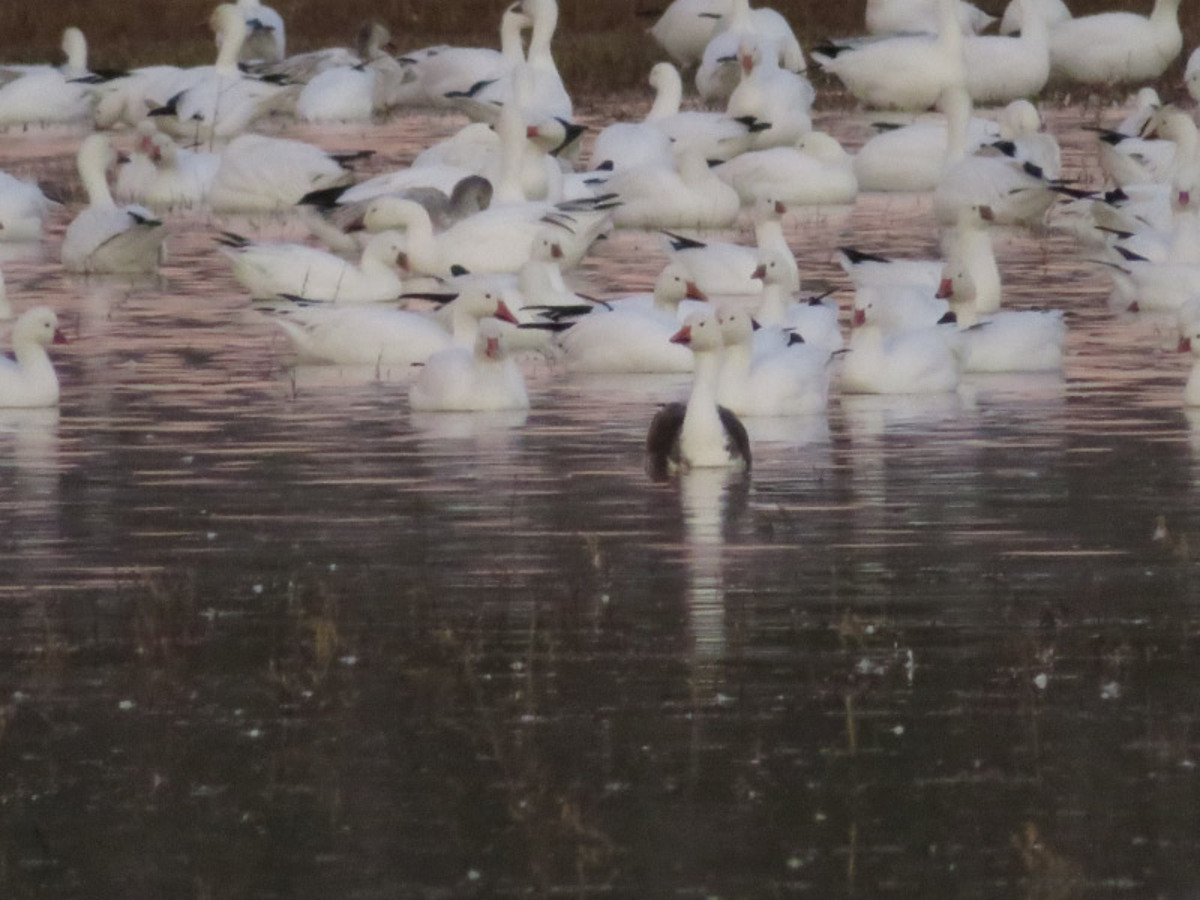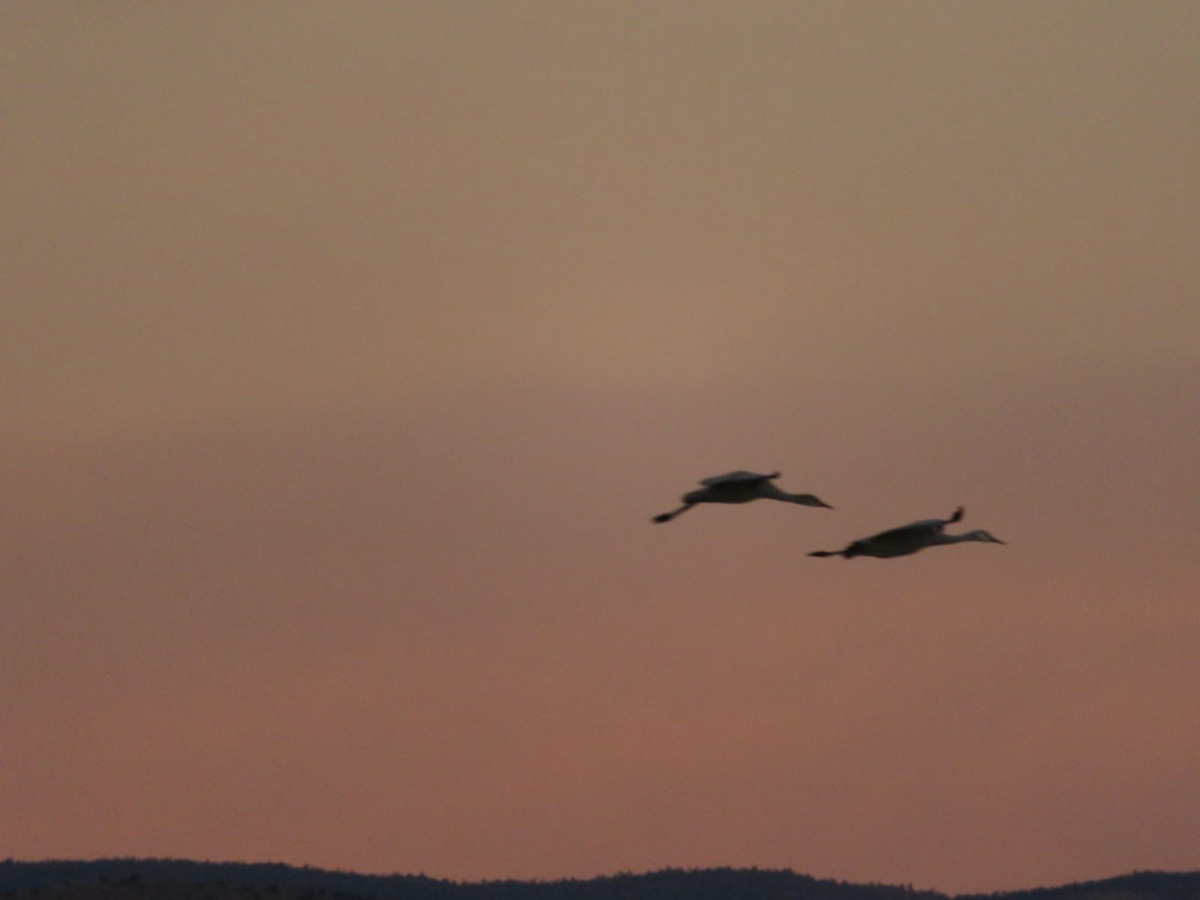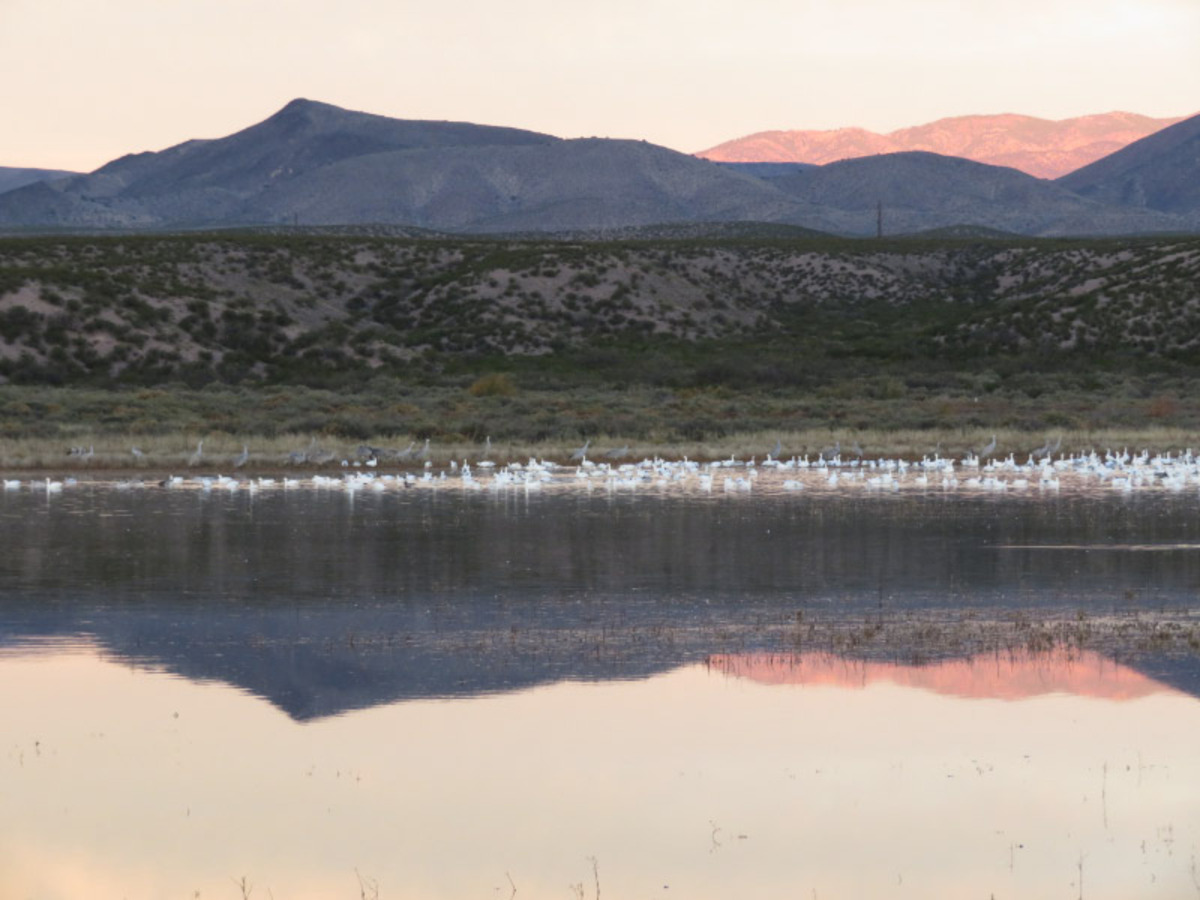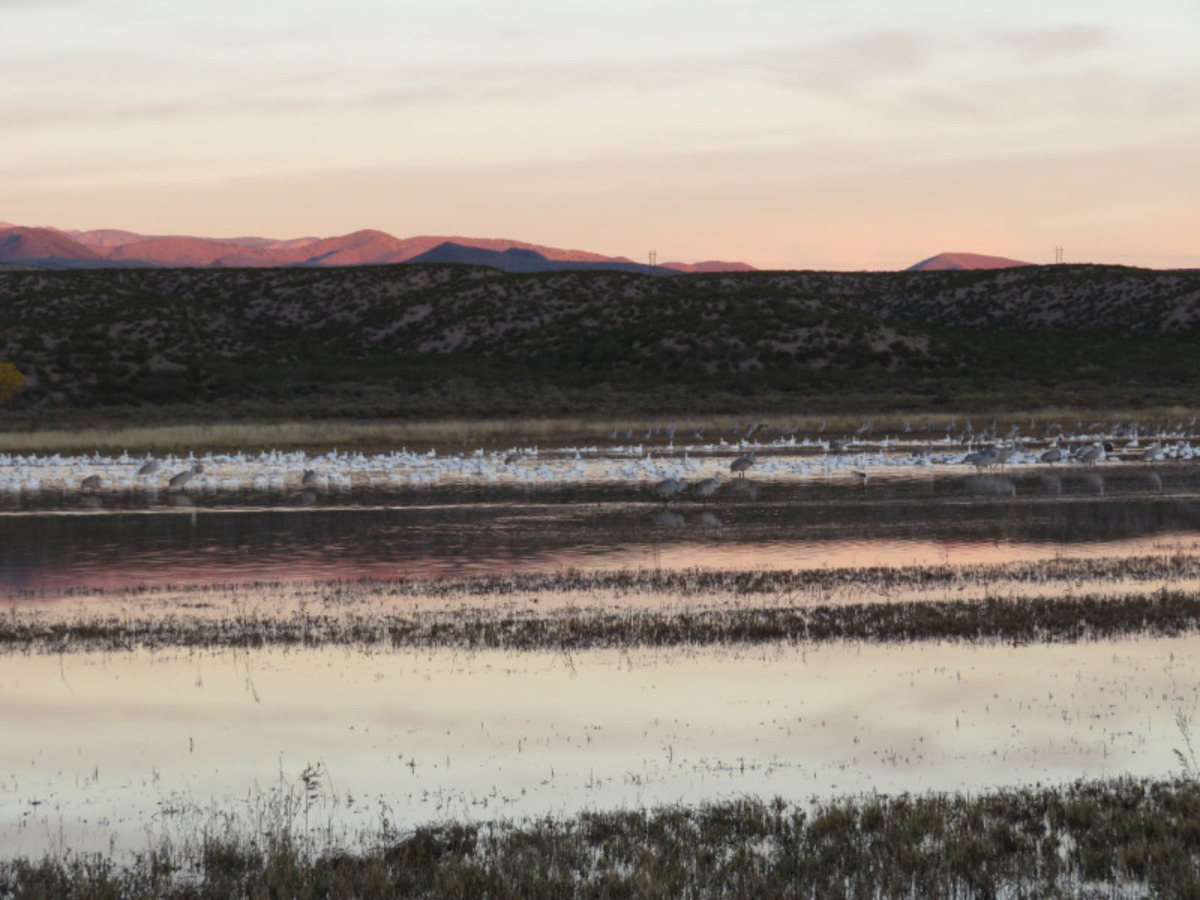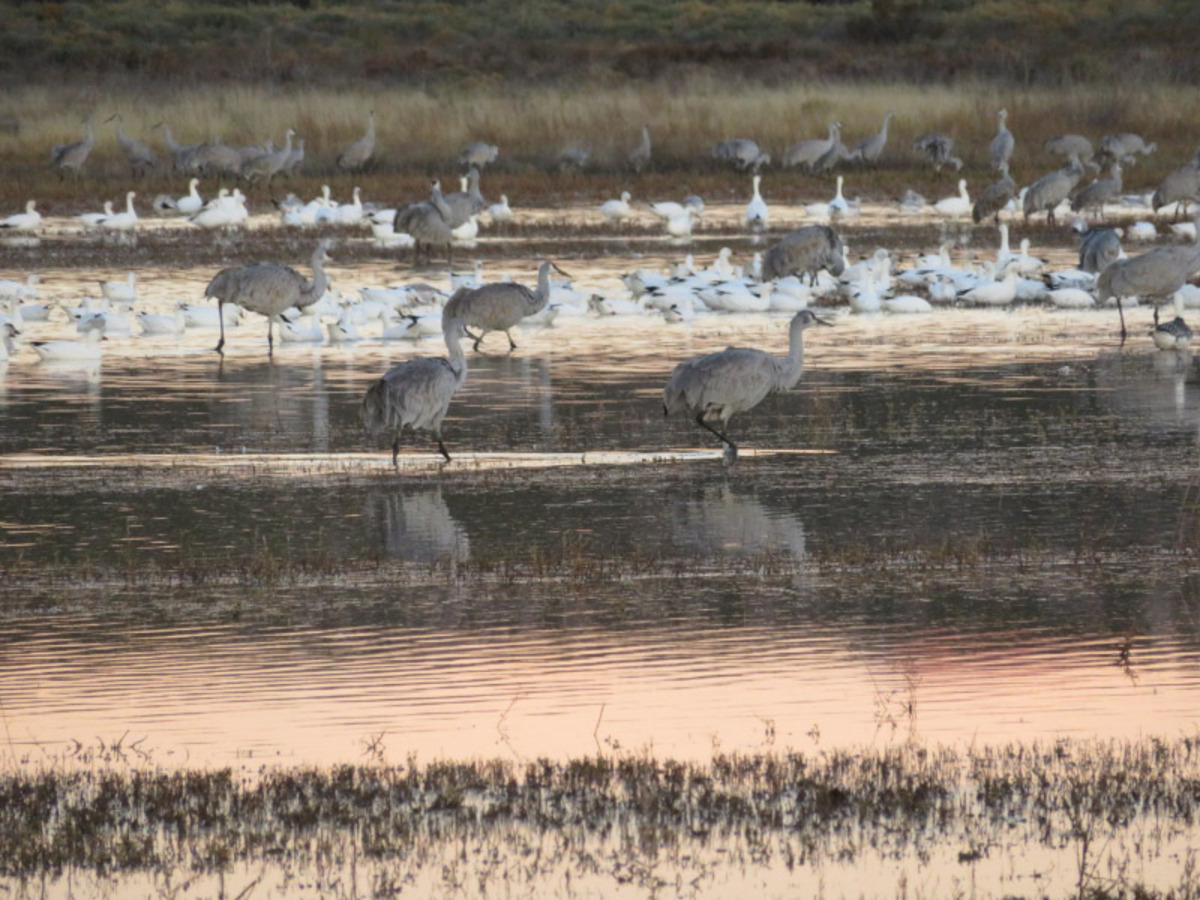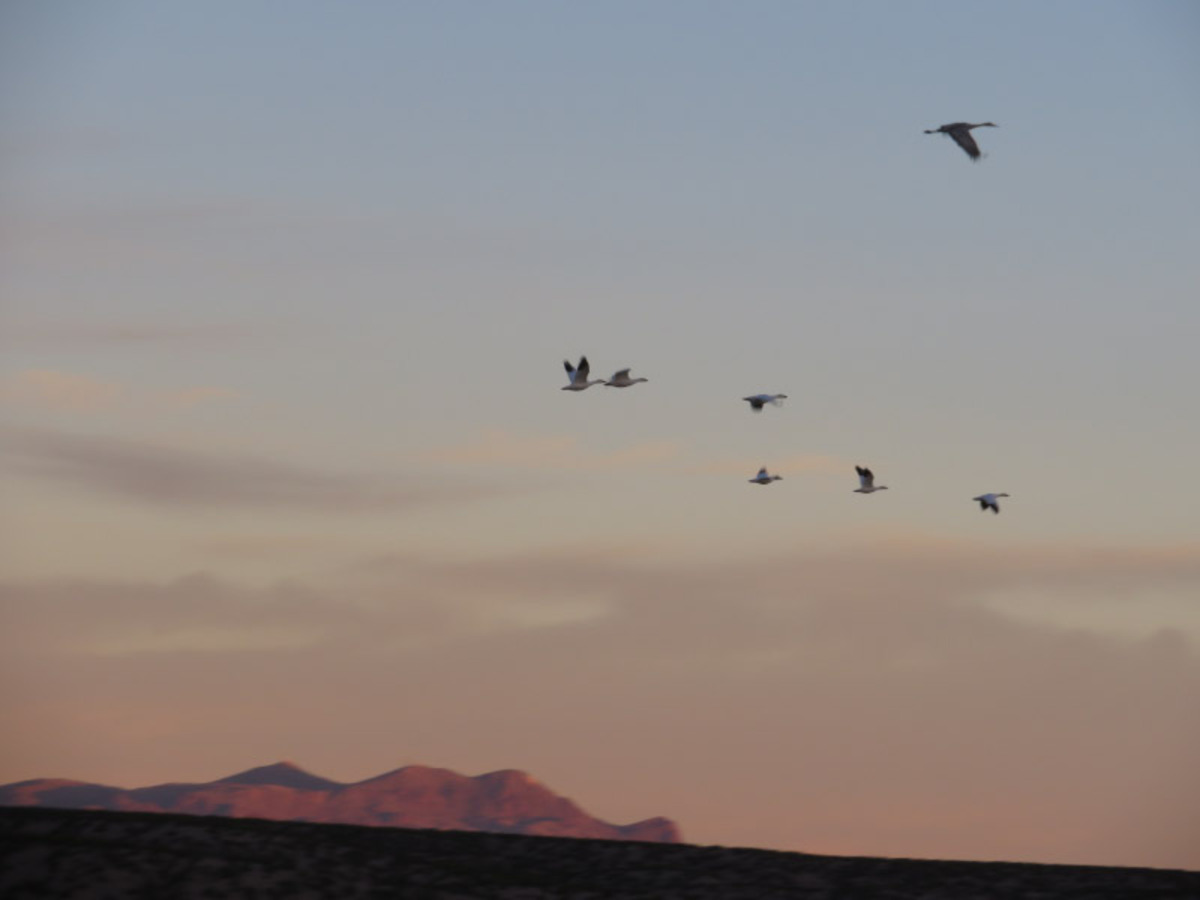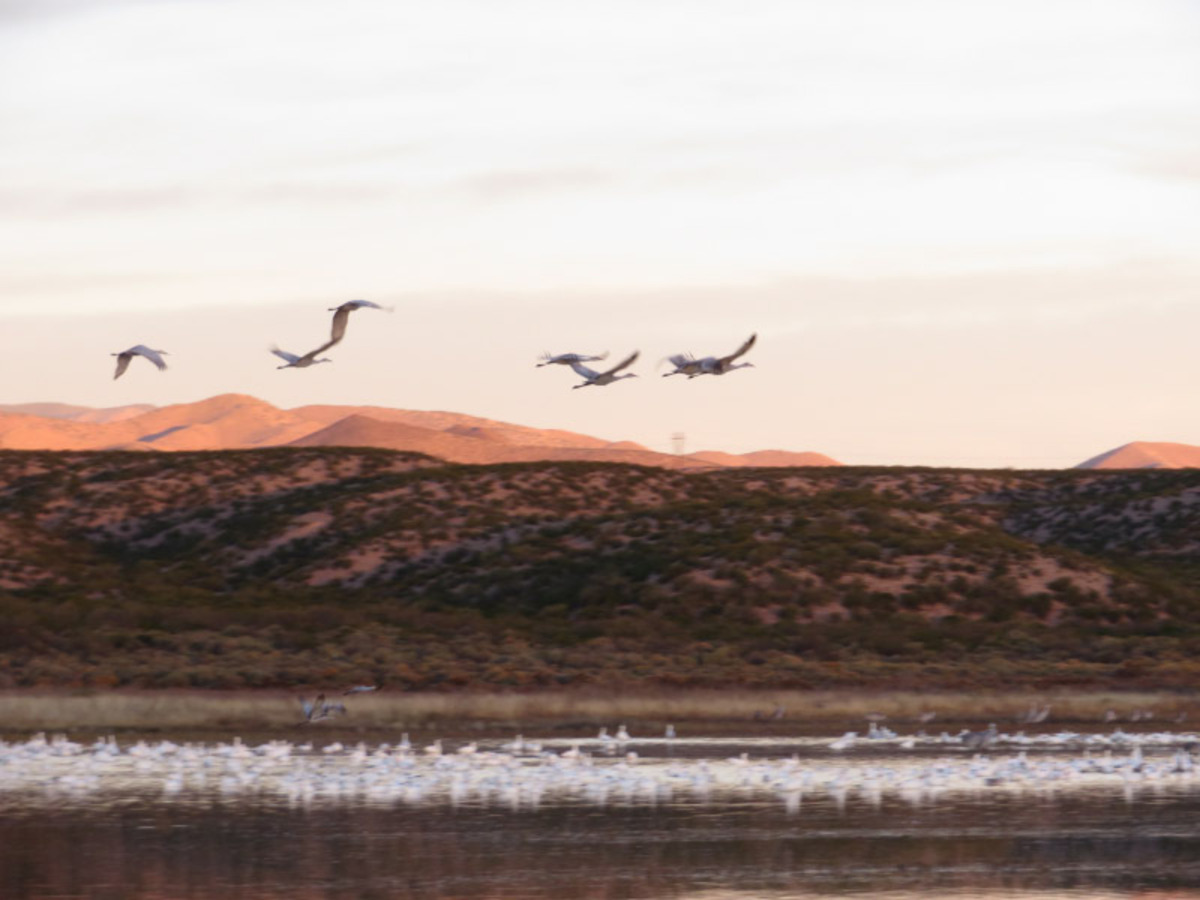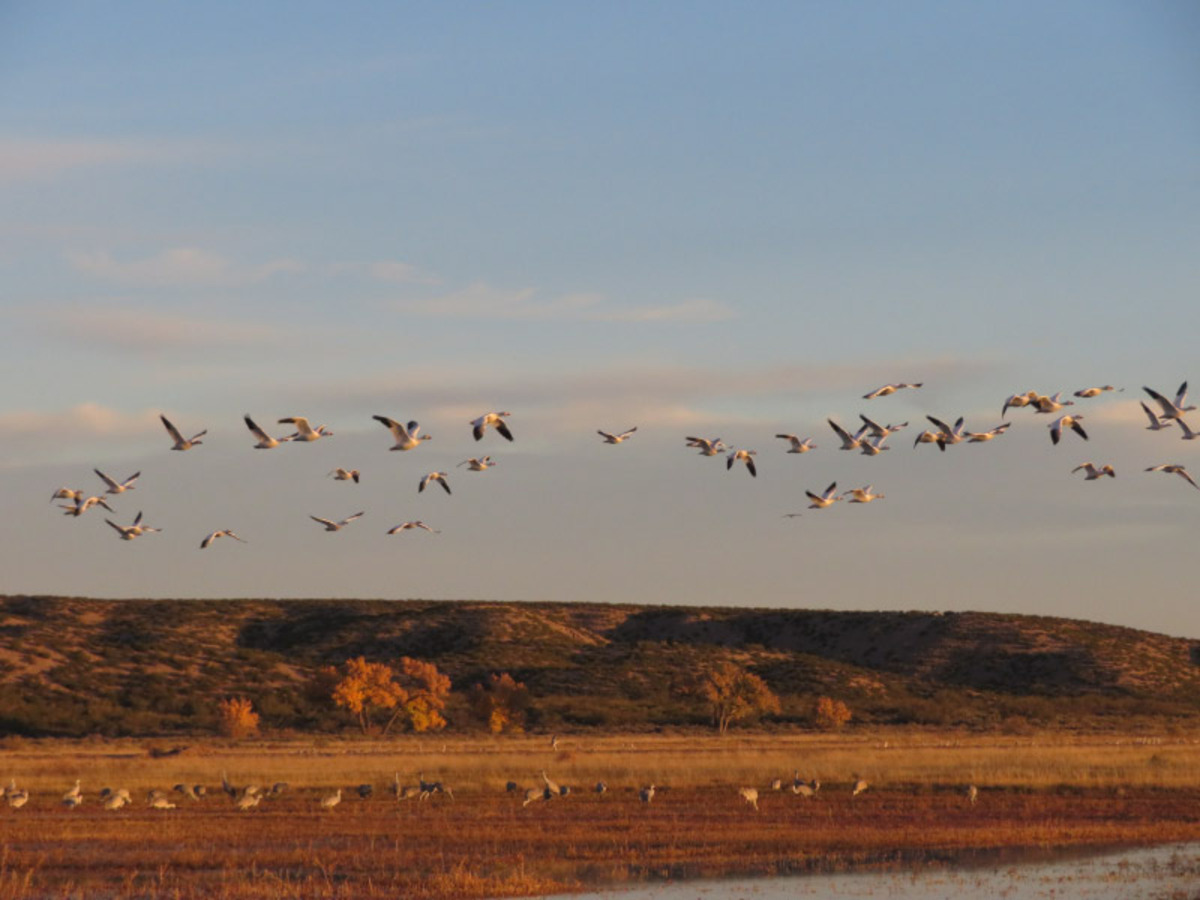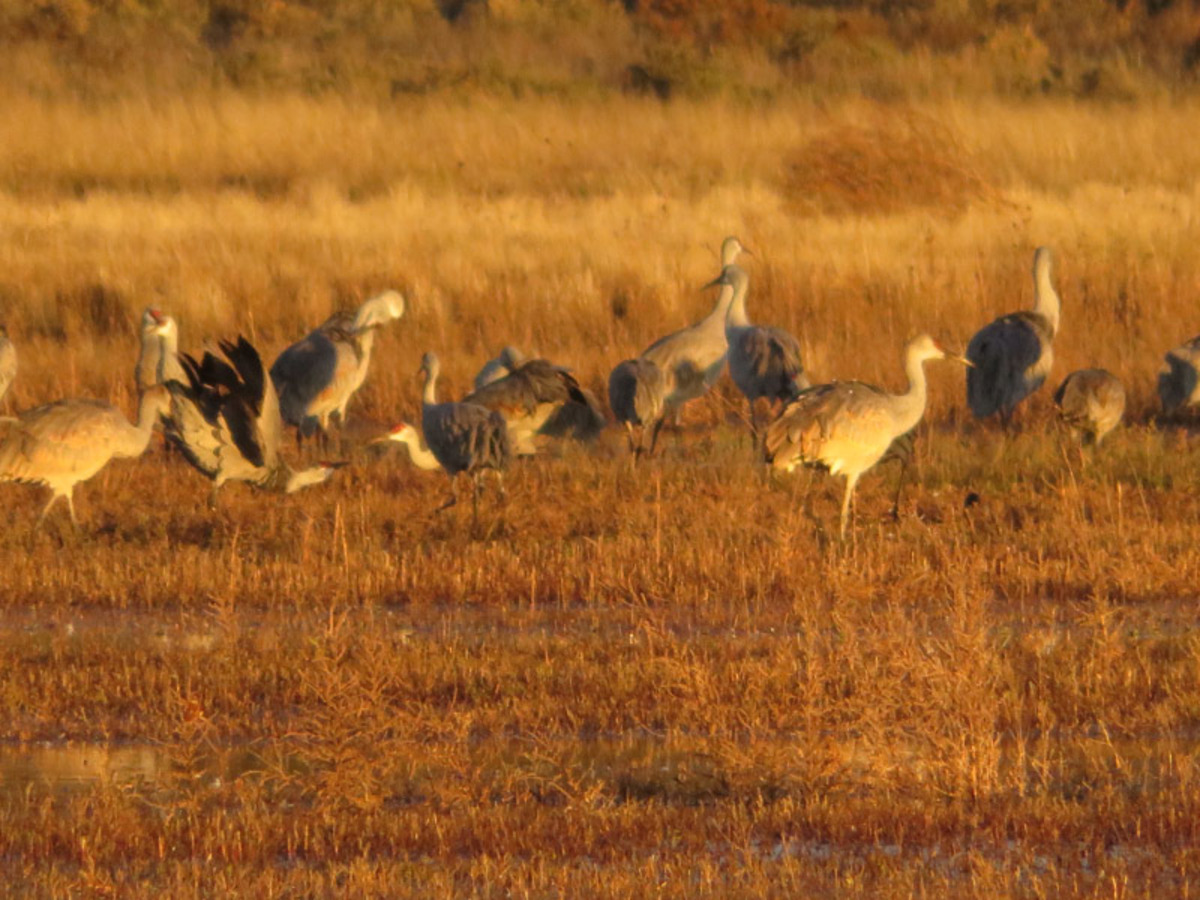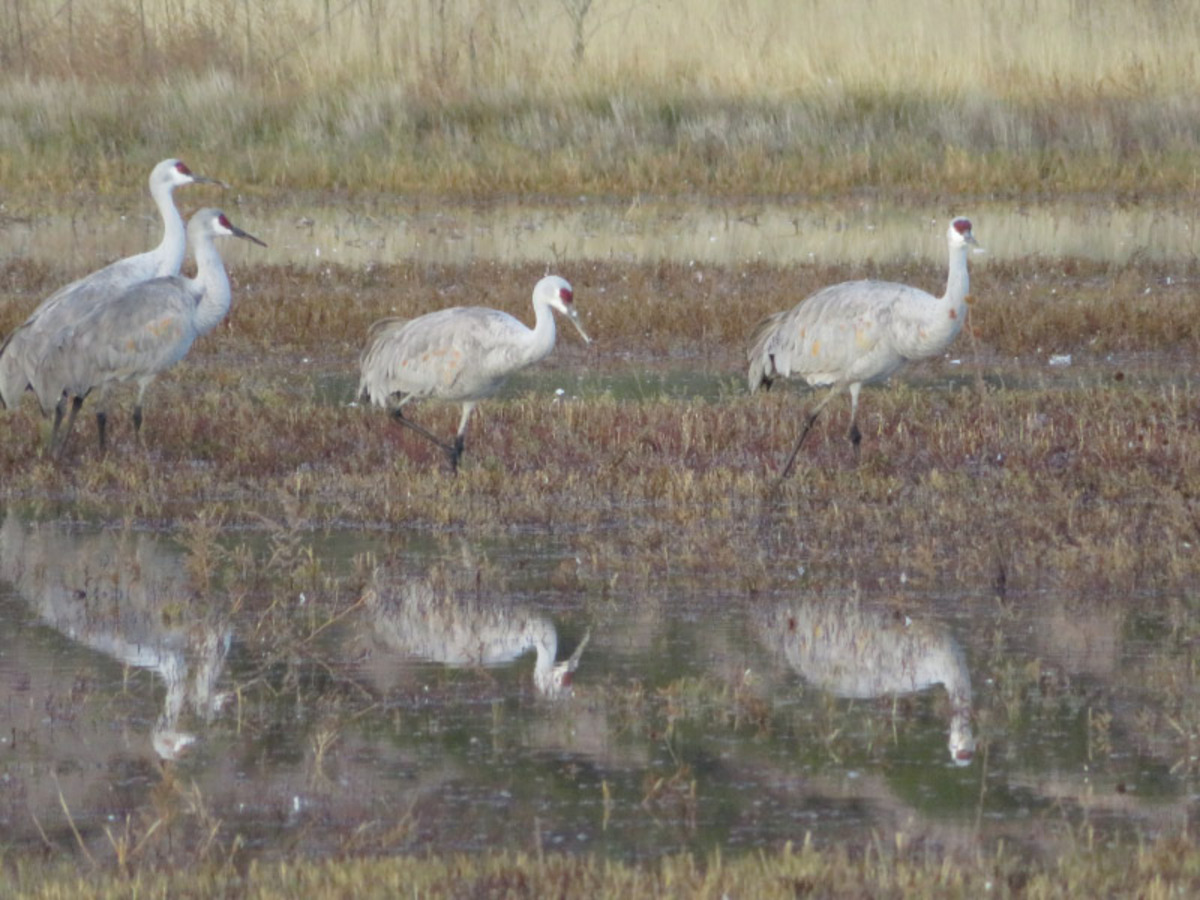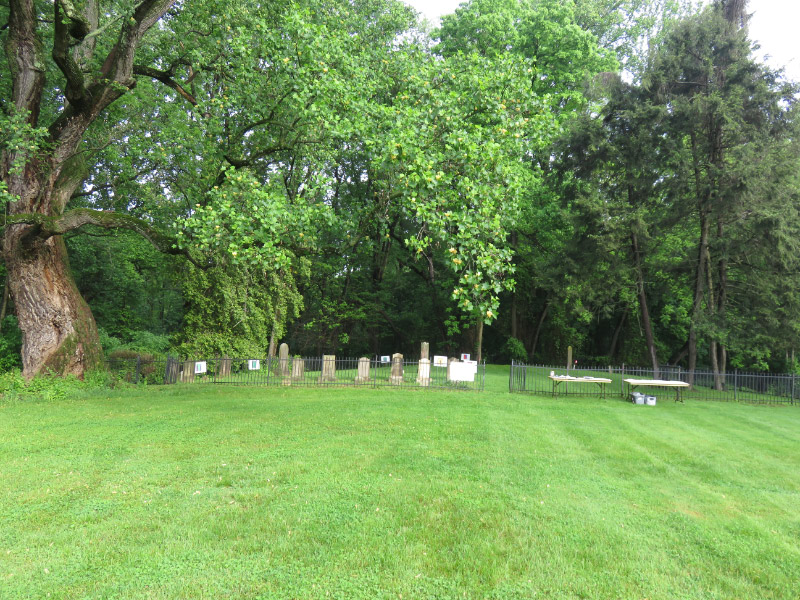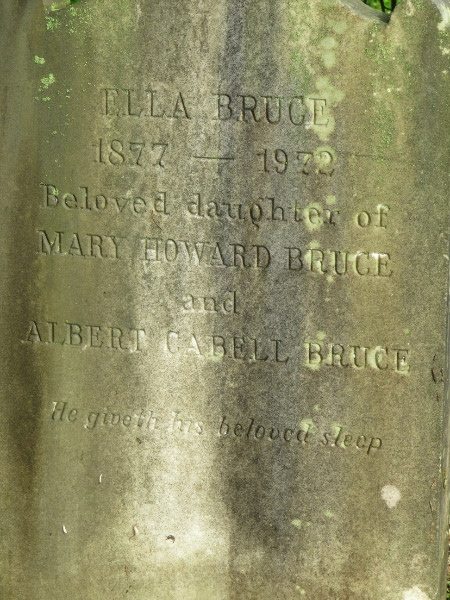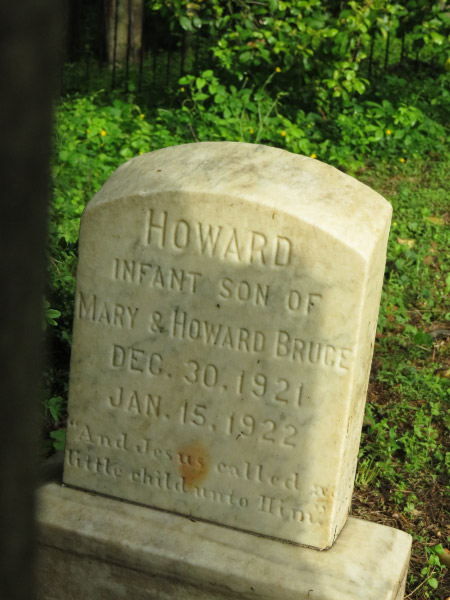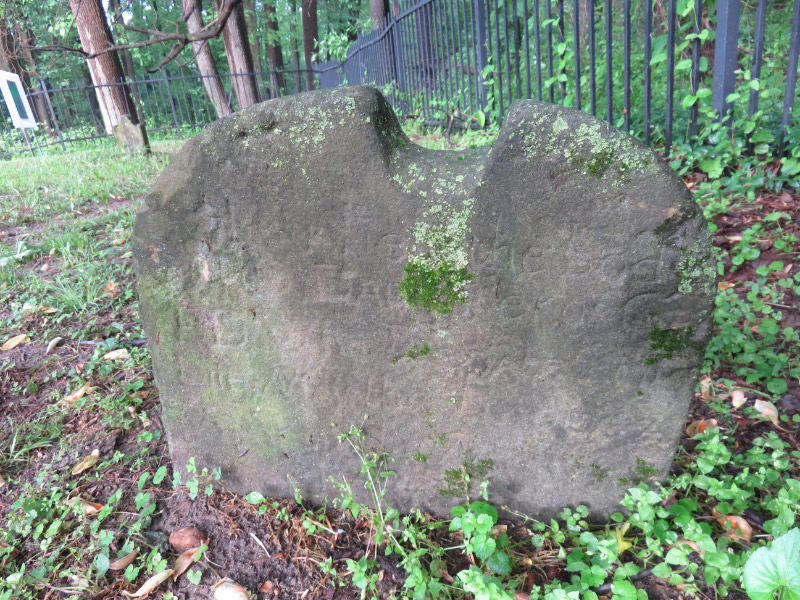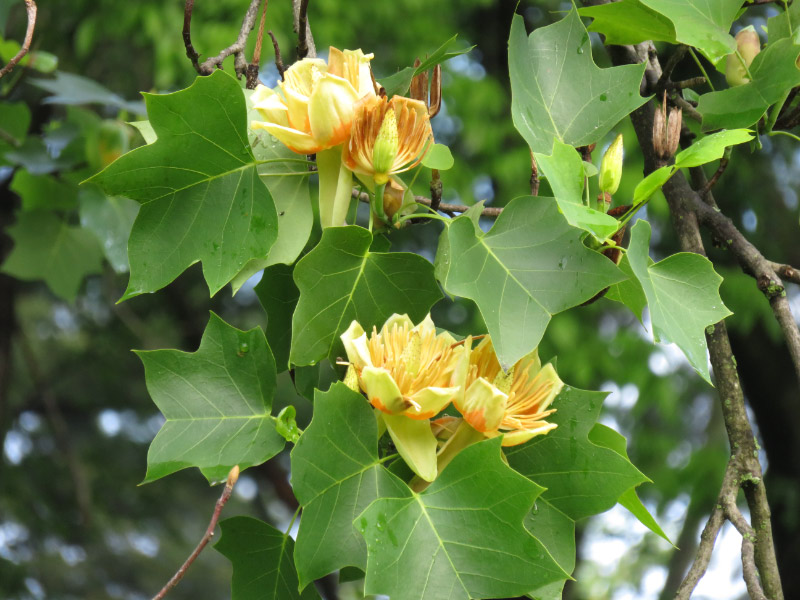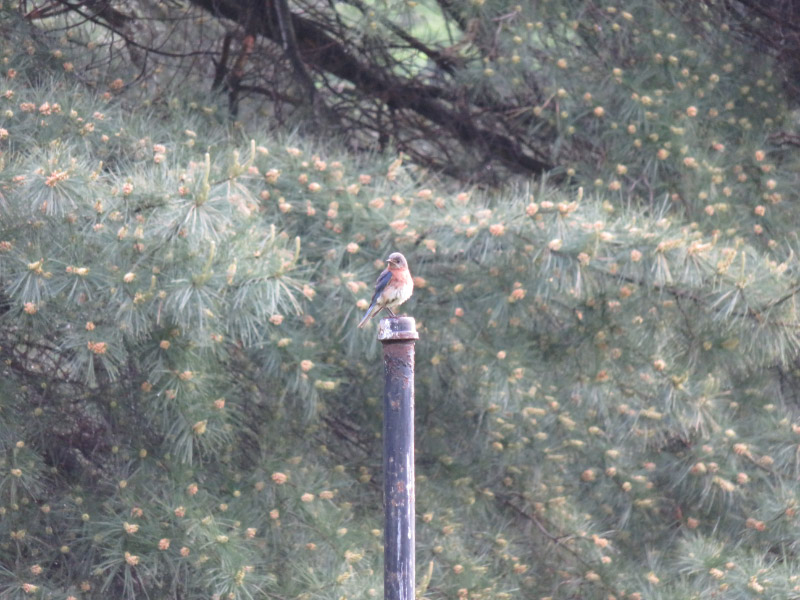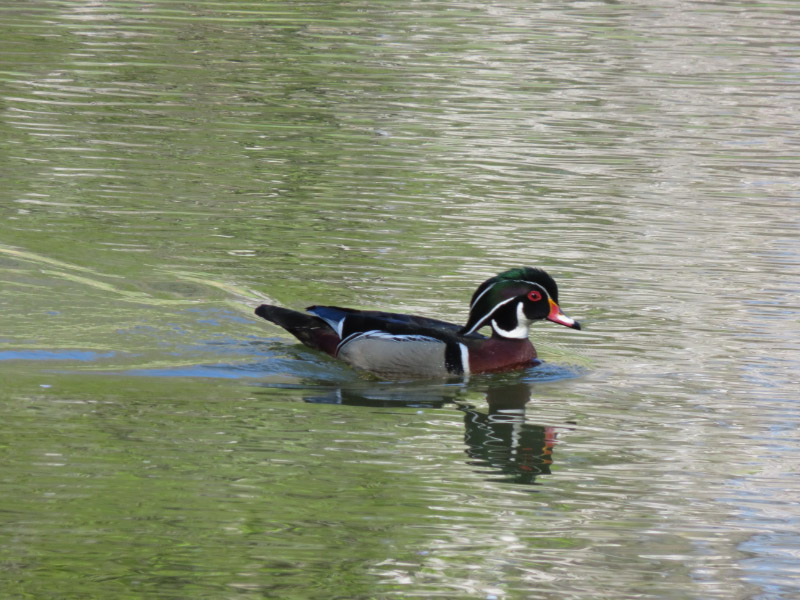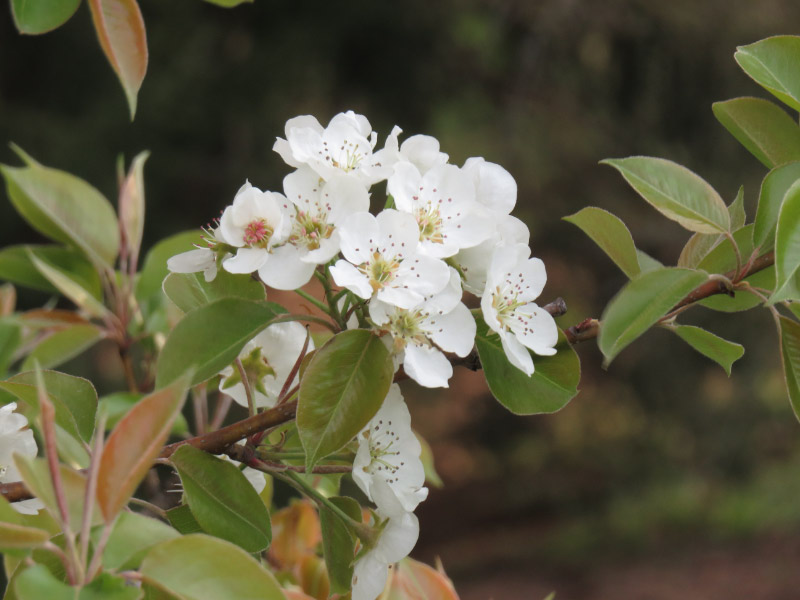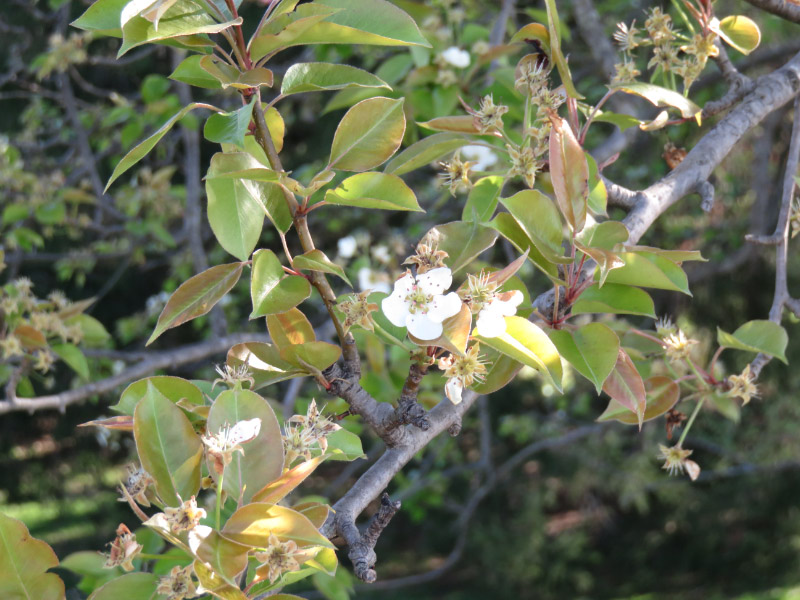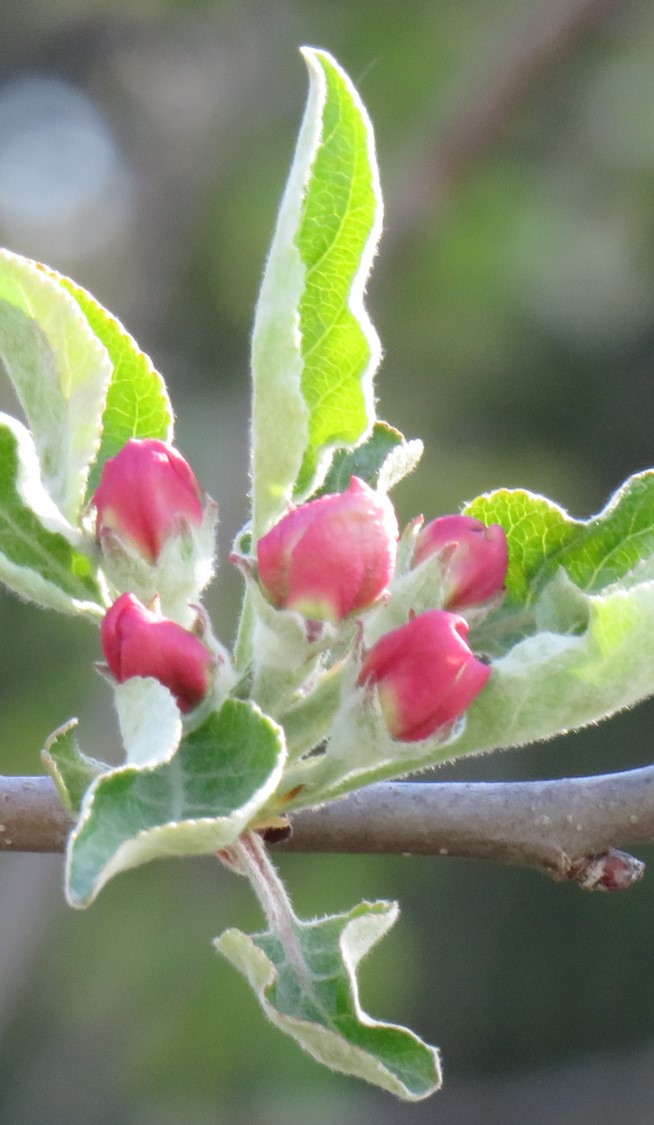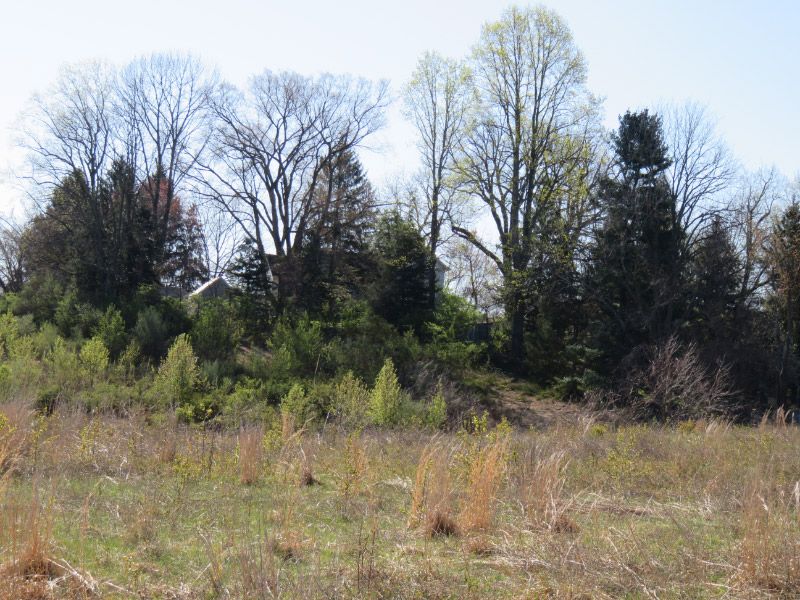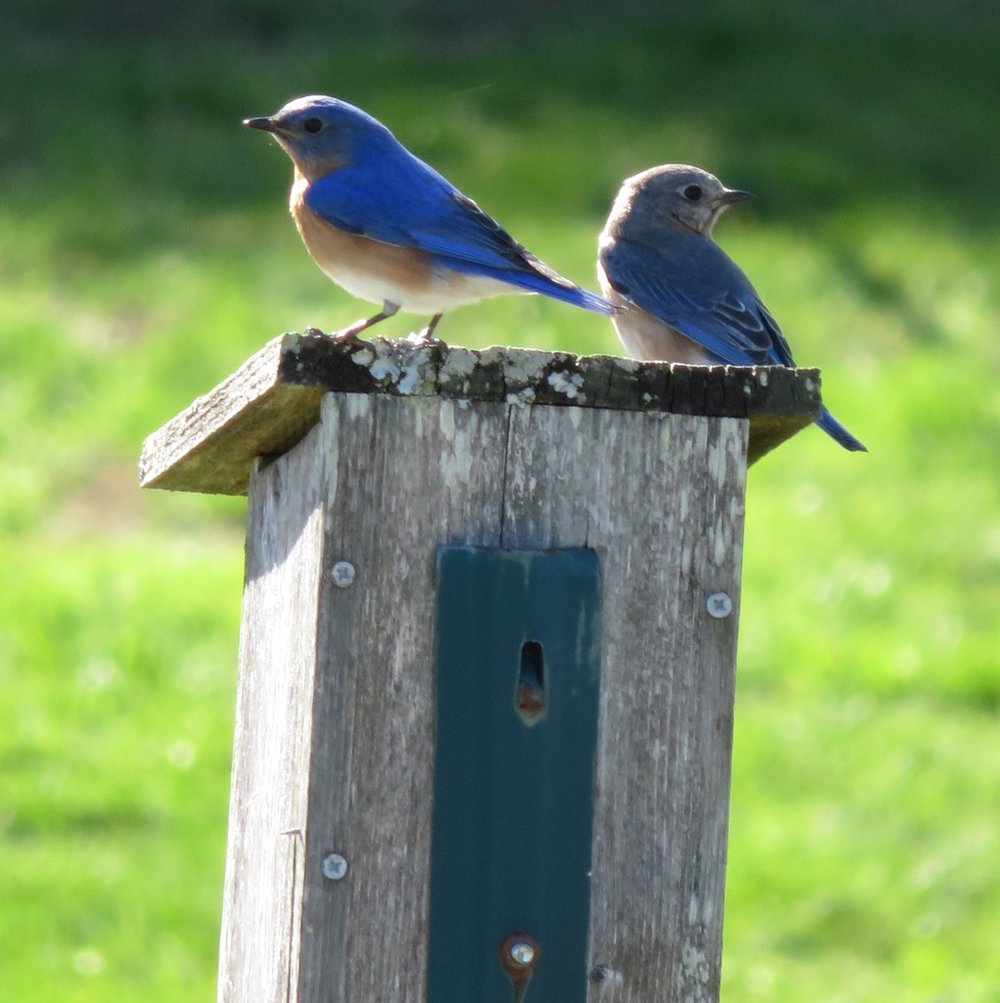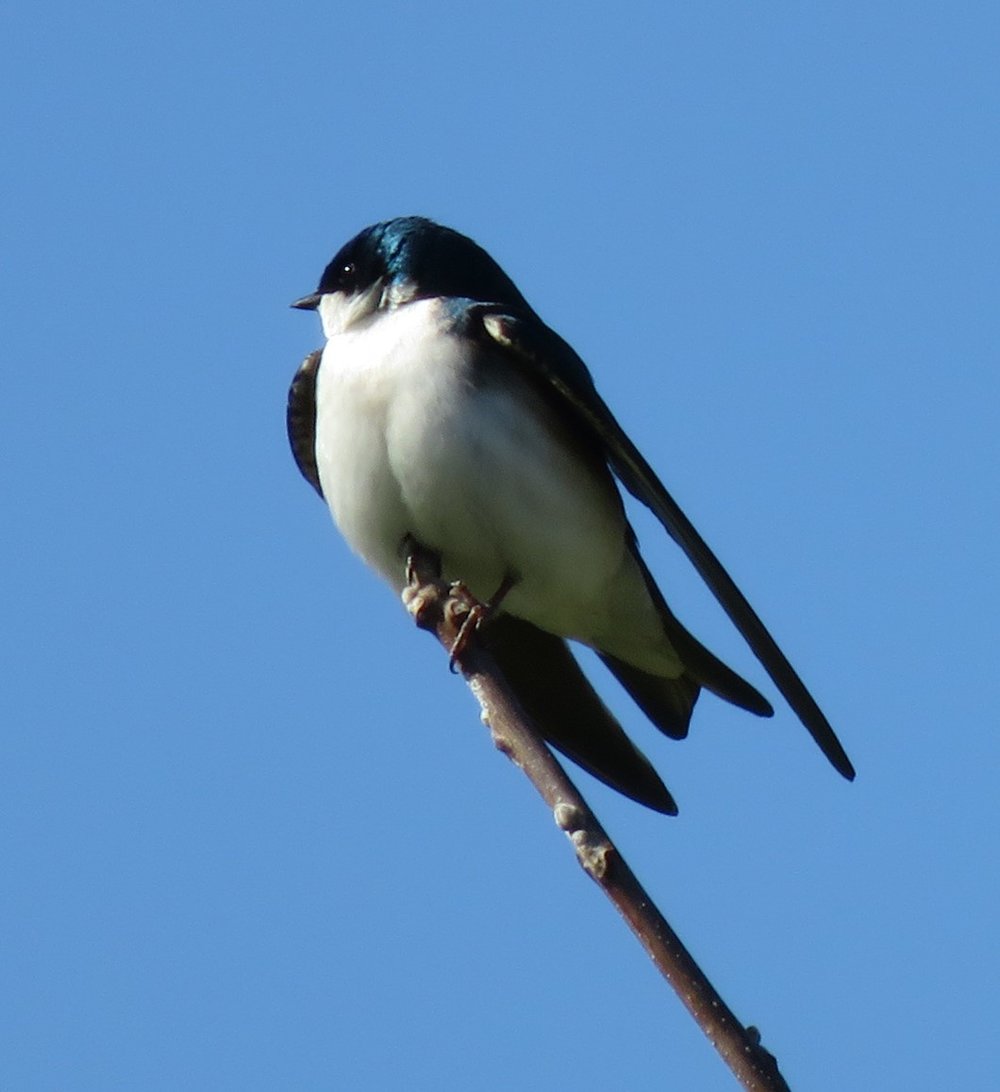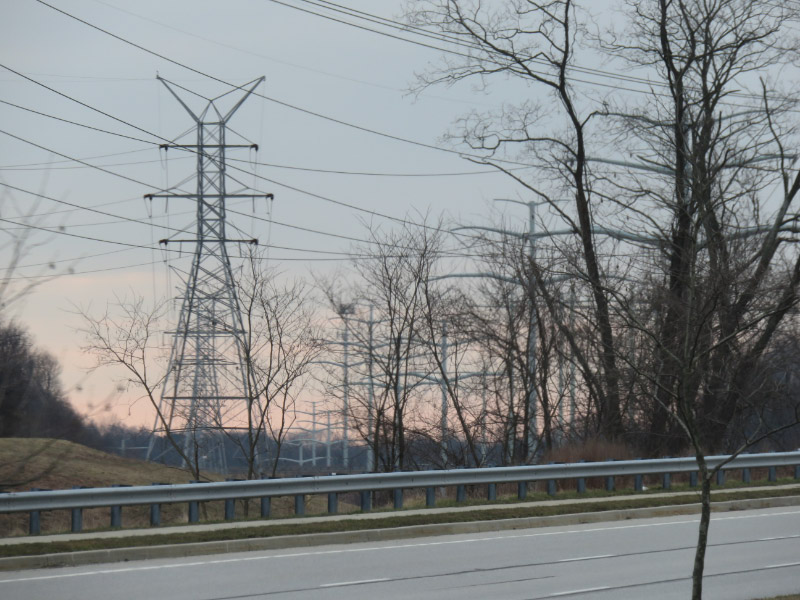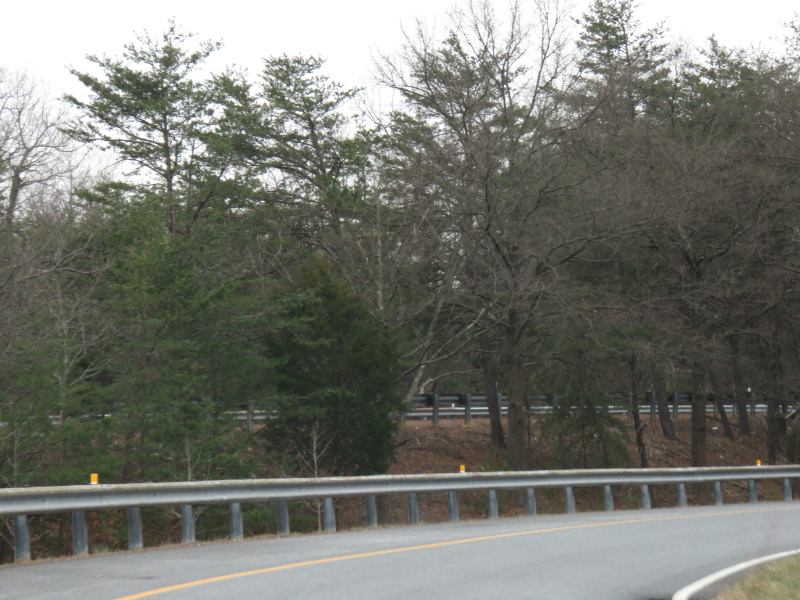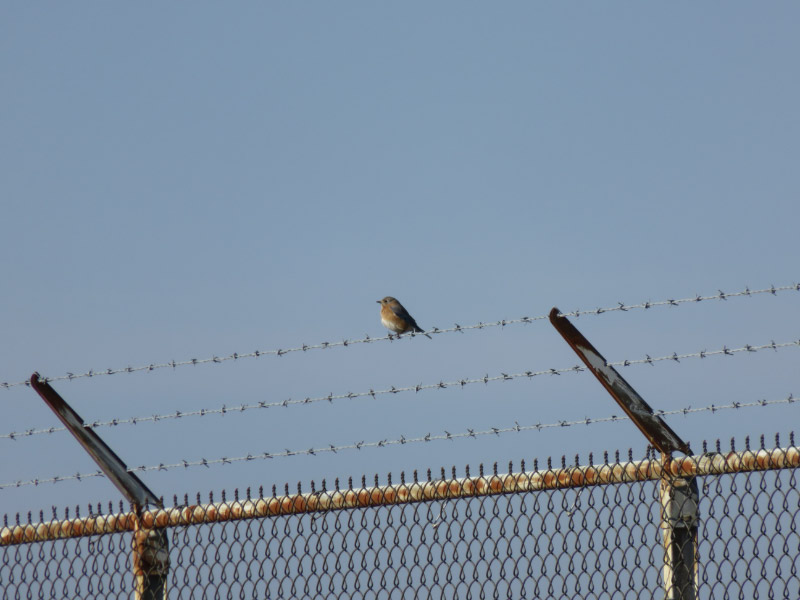Second Morning at Bosque del Apache
/We signed up for and early morning ‘Bosque del Apache Hot Spots and Elusive Birds’ tour that started at 5:30 AM on our second morning at the Festival of the Cranes. That meant me had to leave our hotel before 5…and it was cold. The tour participates and our guide climbed on the bus and were at Crane Ponds before 6 – well before dawn. The goal was to see the sandhill cranes and snow geese ‘fly out’ of their roosting area (in the water) to feeding areas in the fields in and around the refuge during the day. The action took place in less than an hour. The slide show below includes the time ordered images – once it got light enough for my camera to work reasonably well.
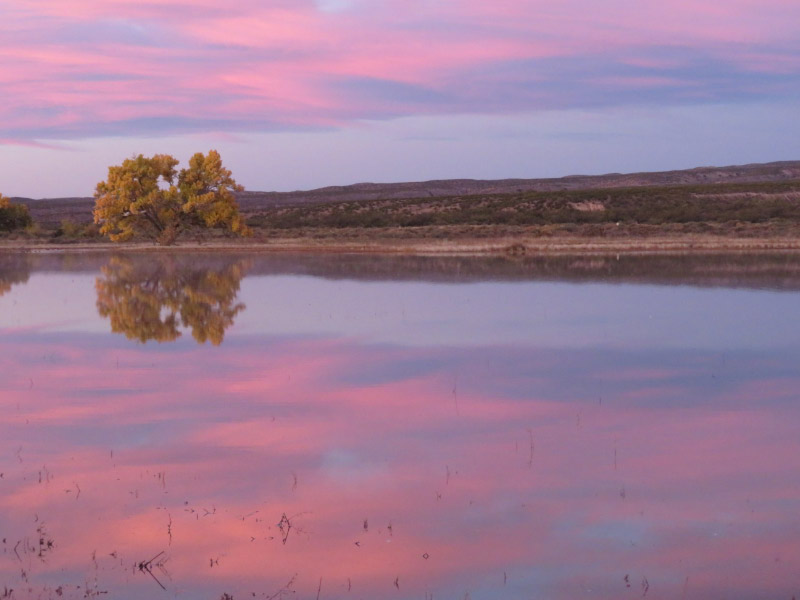
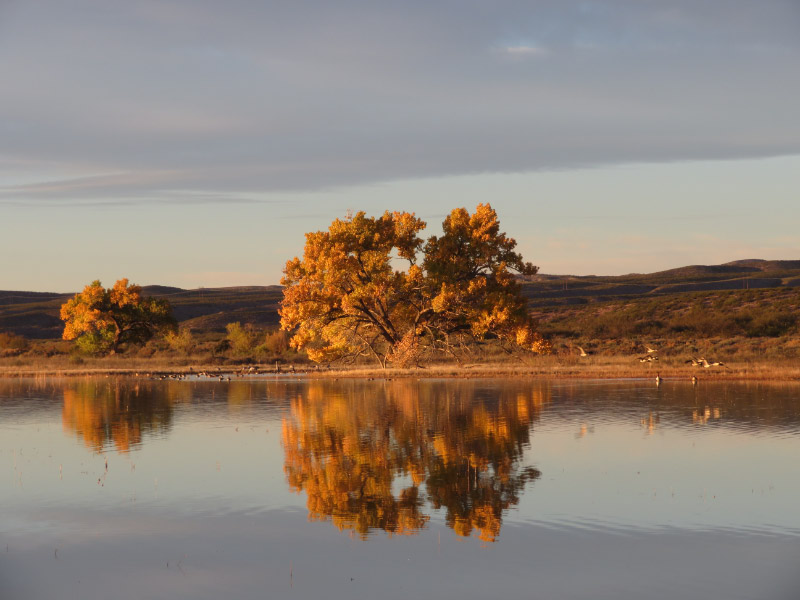
There was almost no wind so the reflections were good. I photographed a cottonwood tree repeatedly. The two pictures below are about 25 minutes apart…the pinks before dawn and the yellow light after.
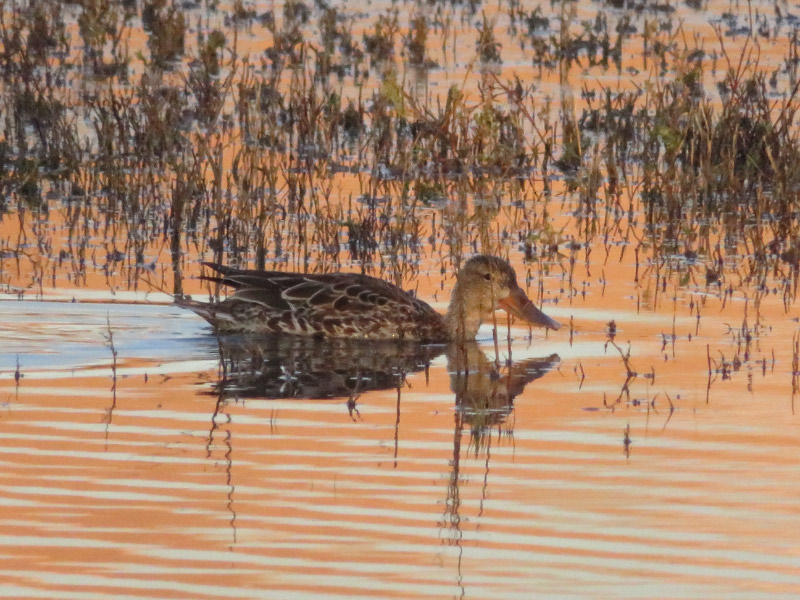
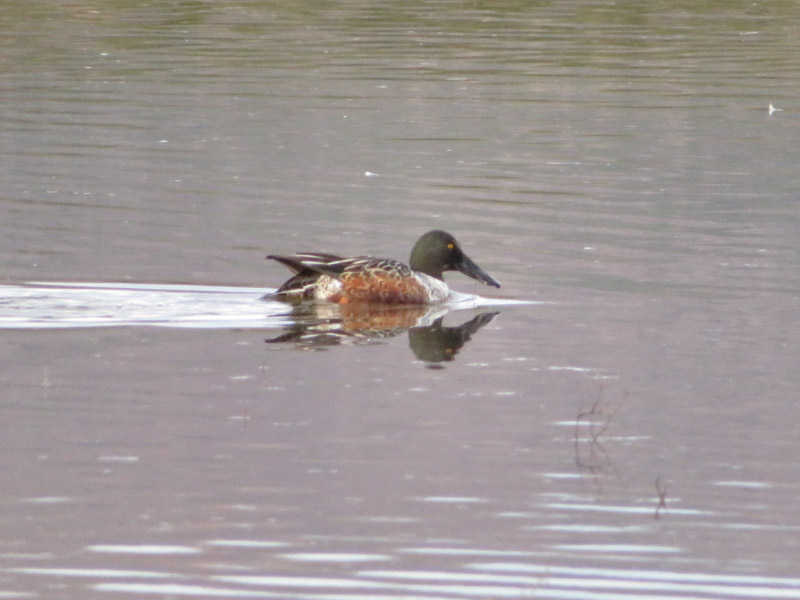
There were other birds on the ponds too. The two pictures below are a female and male Northern Shoveler. The female is peeking out from behind pond vegetation…in the orangey reflections after sunrise. By the time I photographed the male about 30 minutes later, the magic of morning light was gone.
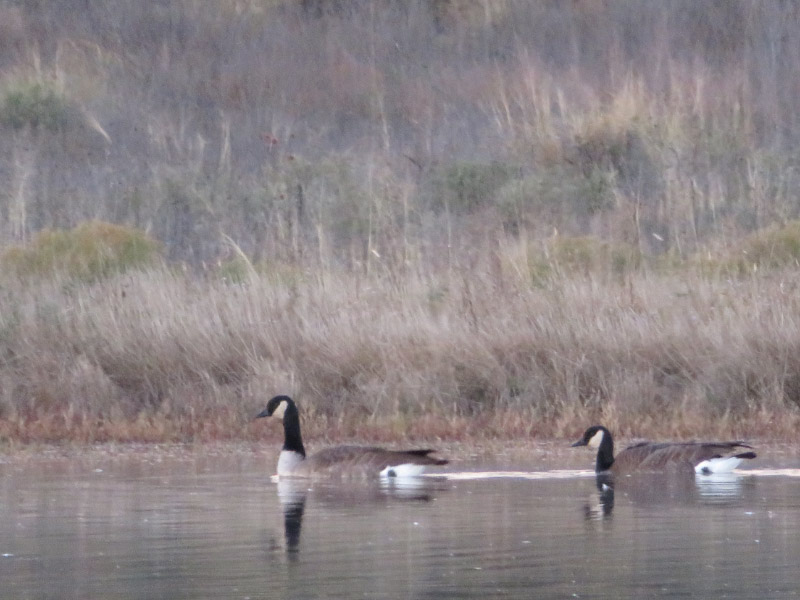
There were Canadian Geese on the ponds too – a familiar bird to us and not as numerous as at Bosque as where we live in Maryland.

A last picture at the ponds before we headed back to the Visitor Center for breakfast: the mountains reflected in the Crane Pond. If you look toward the top of the image, you’ll see the moon peeking out from behind a cloud.
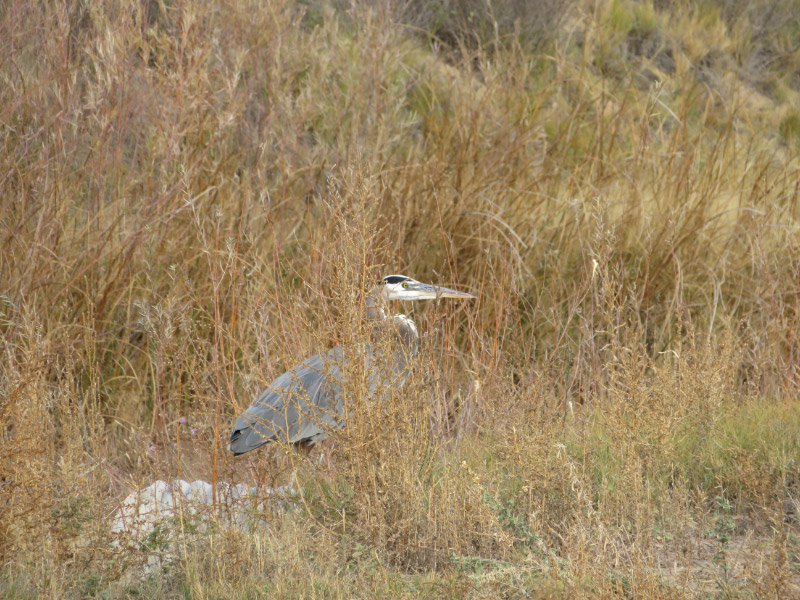
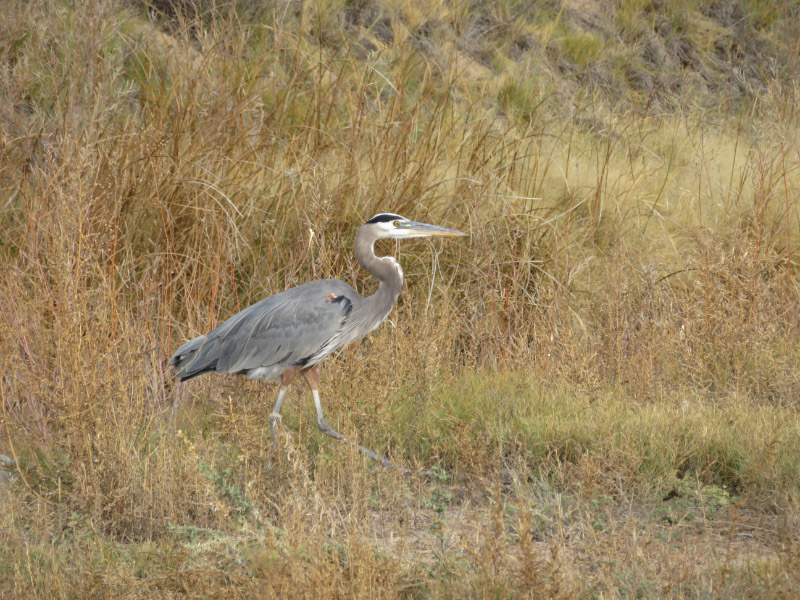
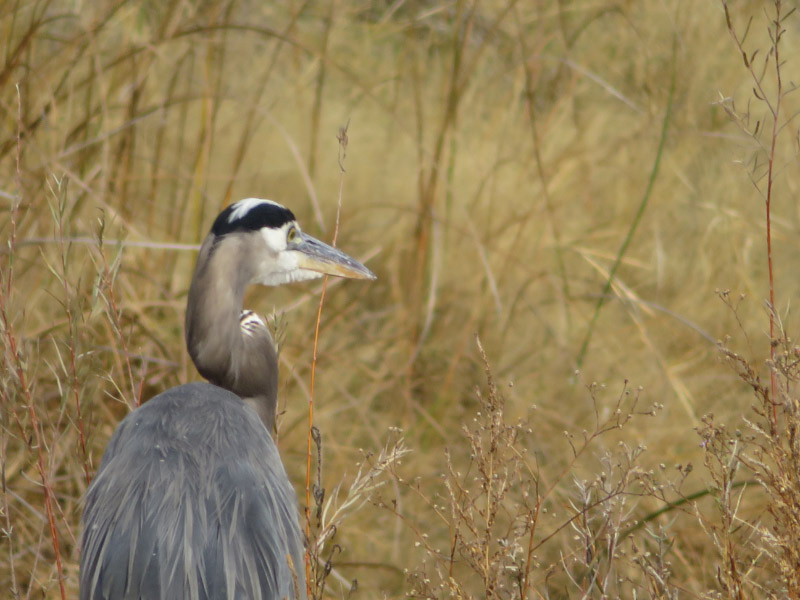
After warming up while we ate breakfast, it was back on the bus. The Great Blue Heron we saw in one of the irrigation canals is so consistently present that the refuge staff has informally named him: Hank. The herons are not as prevalent at Bosque del Apache as we’ve seen in places like Conowingo Dam in Maryland…but another familiar bird to us.
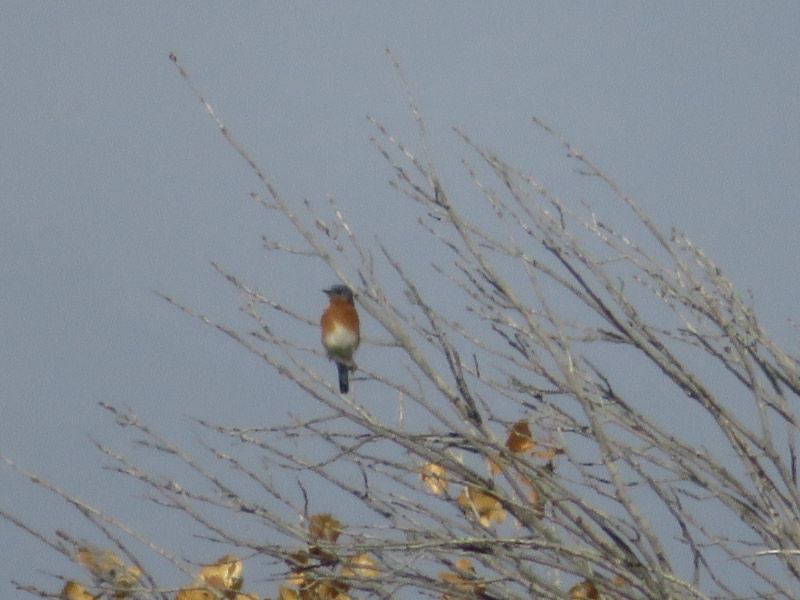
Another familiar bird was surprise for me: an Eastern Bluebird. Evidently there are both eastern and western bluebirds on the refuge but the Eastern ones are more common in November…and this one looks more like an Eastern Bluebird to me!
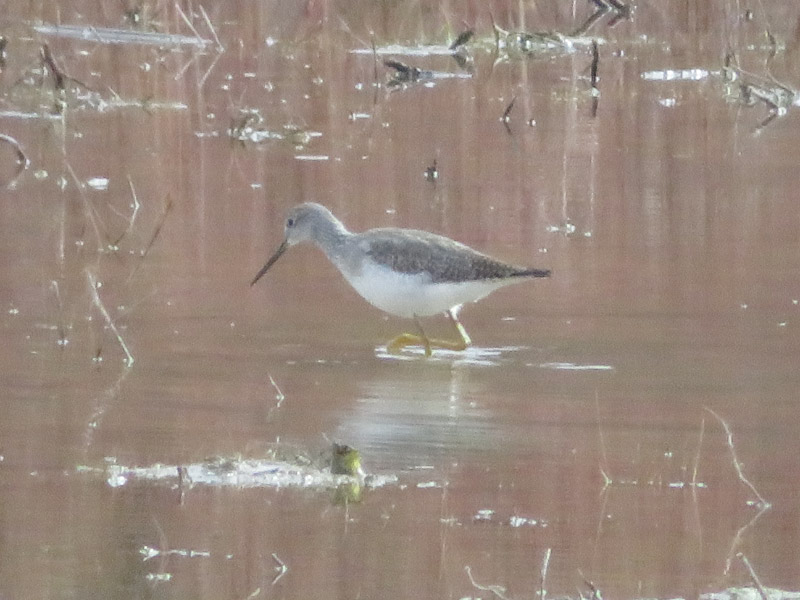
And I got a picture of the legs on the Yellowlegs in one of the ponds.
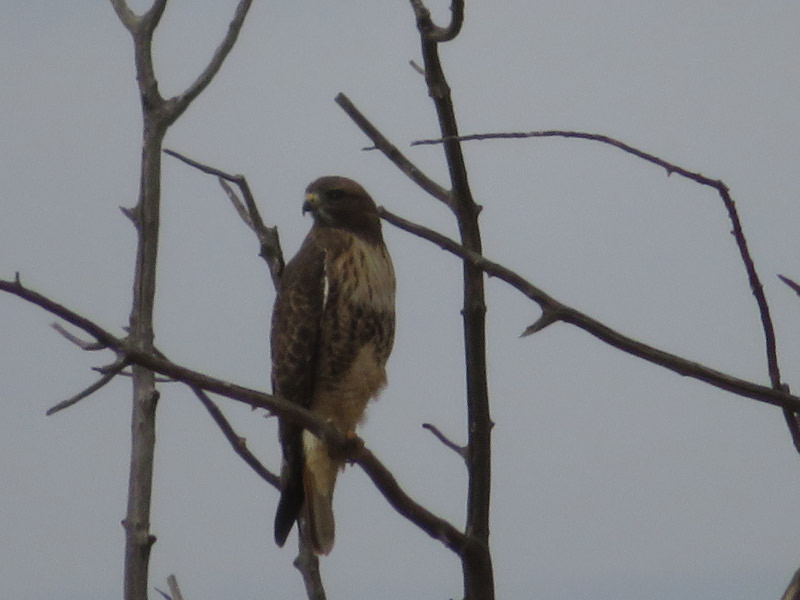
There was a red-tailed hawk in one of the snags. It is a little too far away to be a ‘good’ picture but the distinctive patter on the breast make it good enough for identification.

There was a coyote watching Sandhill Cranes feeding. The predator was keeping its distance from the big birds.
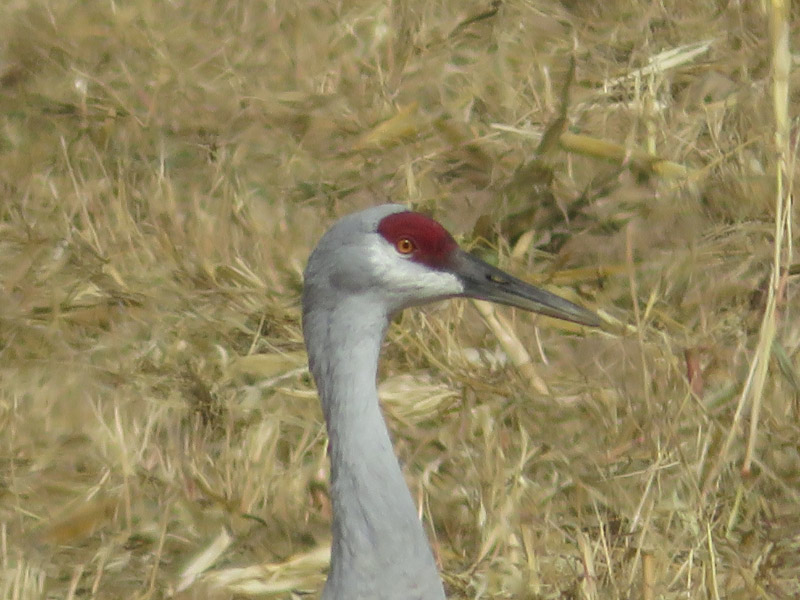
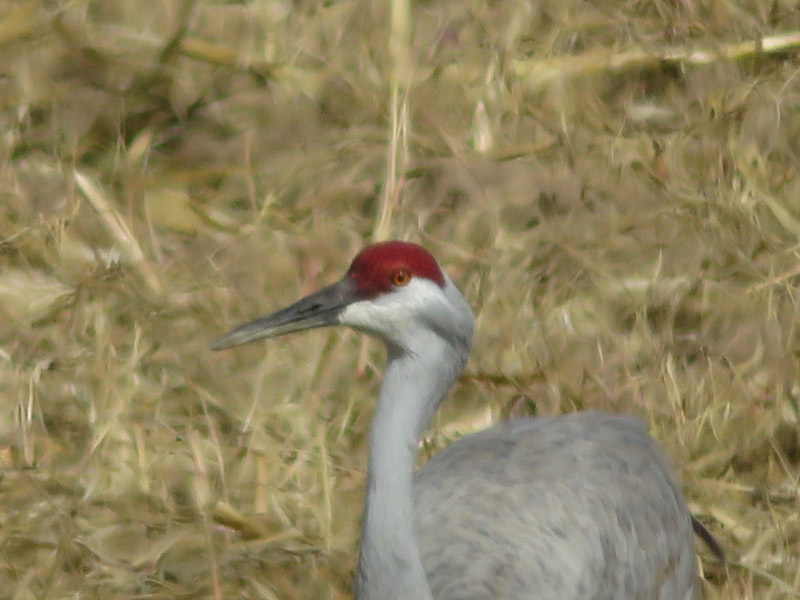
I couldn’t resist some more zoomed shots of cranes. The red color on their head is such a vivid mark.
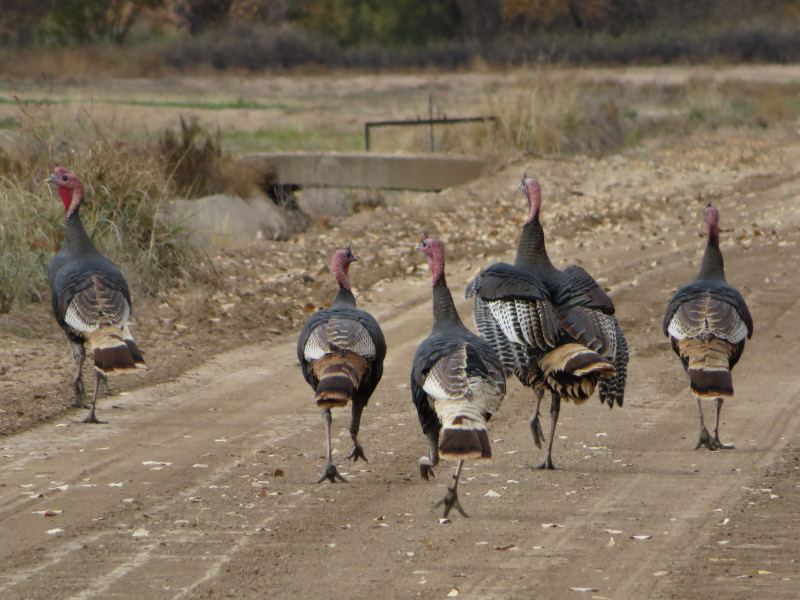


Our guided tour took us down a refuge road that is not part of the wildlife loop; the road was called ‘turkey road’ and we did see turkeys! They were come out of a path onto the road. As soon as they noticed the group of people taking pictures – they ran in the opposite direction! The turkey further back in line ran the hardest when they got out on the road and realized their ‘friends’ were so far away.
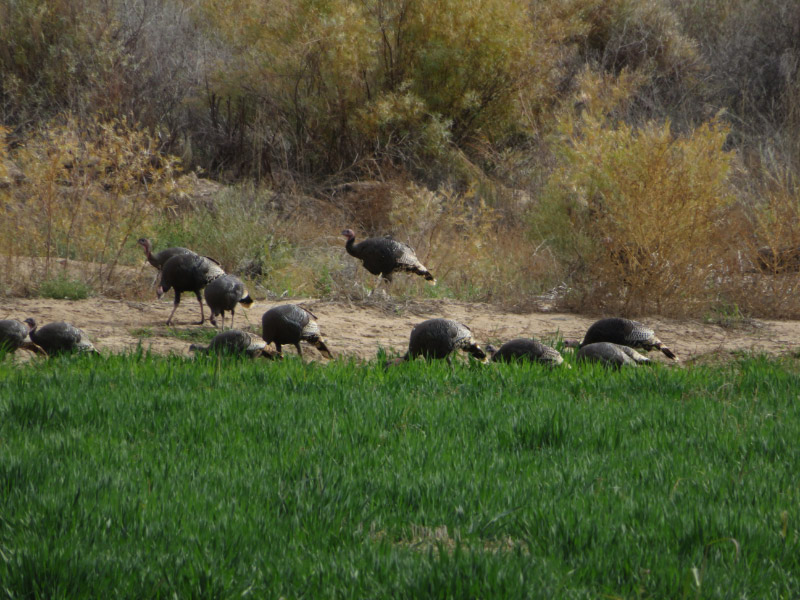
Then we turned around and saw another group of turkeys behind the bus. We must have seen about 50 birds just from that one vantage point.
It was quite a morning. We had excellent barbeque sandwiches from a food truck for lunch then headed out to our afternoon adventure...that’s the topic for tomorrow post.

